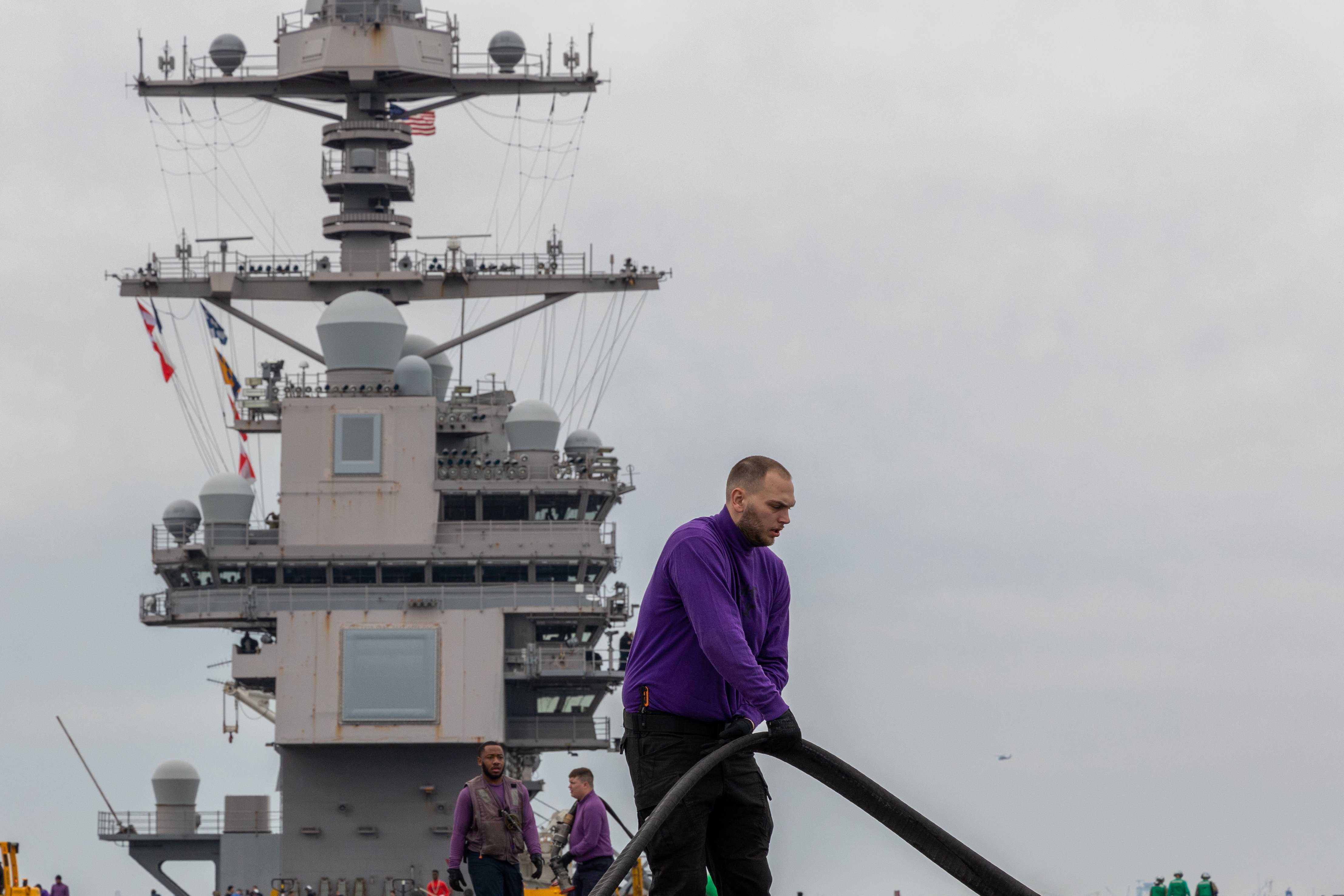
ABOARD AIRCRAFT CARRIER USS GERALD R. FORD IN THE ATLANTIC OCEAN – The pressure is high and getting higher for the crew of the U.S. Navy’s newest aircraft carrier.
Since it was commissioned in 2017, the Navy has slowly excised gremlins from close to two dozen new systems aboard USS Gerald R. Ford (CVN-78). After five years of faults, troubleshooting and repairs, Carrier Air Wing 8, its escorts and Carrier Strike Group 12 will embark on their first worldwide deployment, joining the fleet in earnest as a fully functional warship.
But before it deploys – likely to the Mediterranean to continue the deterrence mission against Russia – the ship’s company of 2,700 sailors, the 1,500 sailors of the air wing and five surface ships will face a challenge tougher than Congressional criticism.
Last week, the carrier left Naval Station Norfolk on its composite training unit exercise (COMPTUEX). The complex exercise is the last hurdle before the unit is “certified for national tasking,” or able to deploy throughout the world at the direction of the president via the Secretary of Defense.
While Ford has been underway for systems tests, training, pilot qualifications and international exercises, it hasn’t been ready to take on a full seven-month carrier strike group deployment – arguably the most important and in-demand formation the Navy produces.
As part of the exercise, the carrier crew is working to meet the launch and recover stats of the existing Nimitz class. While an increase of 30 percent in the sorties generation rate over the Nimitz class was the selling point for Ford, the carrier hasn’t hit the legacy benchmark yet.

“It’s sustained combat operations over a long period of time over several weeks, as opposed to just a few days at a time,” Ford commander Capt. Paul Lanzilotta told USNI News last week.
COMPTUEX will be the carrier’s first voyage with a full air wing of about 80 aircraft: four Super Hornet squadrons, an electronic attack squadron, an airborne early warning squadron and two helicopter squadrons.
Ford’s addition to the carrier force deployment cycle is long overdue.
Sailing down the James River to the Atlantic, Ford passed two reminders of why the Navy has little margin of error in its deployment timeline. Nimitz-class carriers USS George Washington (CVN-73) and USS John C. Stennis (CVN-74) are both in separate phases of the massive mid-life overhauls that have taken them out of circulation. George Washington is more than a year and a half late completing its overhaul at Newport News Shipbuilding, delayed by COVID-19 workforce shortages and growth in the planned work.
The demand for carriers in no way matches the availability of the hulls. East Coast carriers in particular have endured back-to-back deployments to meet forward-deployed combatant commanders’ demands. Ford’s entrance into the rotation will alleviate the pressure on the 11-carrier force.
The $13.3 billion carrier was set to deploy in 2018 but was delayed by technical problems with its launch and recovery systems, power systems and high-tech weapons elevators, to name a few.
Additionally, Congress required Ford to undergo ship shock trials. The Navy had planned for second-in-class John F. Kennedy (CVN-79) to undergo the tests.
Ford left its last six-month availability at HII’s Newport News Shipbuilding on March 1, 2022, after sailing past three massive explosions off the coast of Florida to test its hull and systems.
After shock trials, for 53 days last year, Ford and its crew embarked on an early operational test, steaming with a reduced air wing while exercising with NATO allies, culminating in a port visit to Portsmouth, United Kingdom. Along the way, the crew and the strike group worked on the basic phases of pre-deployment training, but COMPTUEX will determine if Ford can operate as a warship.

“This is a brand new first-in-class unique weapon system,” Carrier Strike Group 12 commander Rear Adm. Gregory Huffman told USNI News last week in an interview.
“This is our first real opportunity to put it through more of these high-end training evolutions … We’re looking to work all the basics that a strike group would normally do in terms of communications and operations, but then also incorporate some of the unique characteristics that the Ford-class brings.”
COMPTUEX
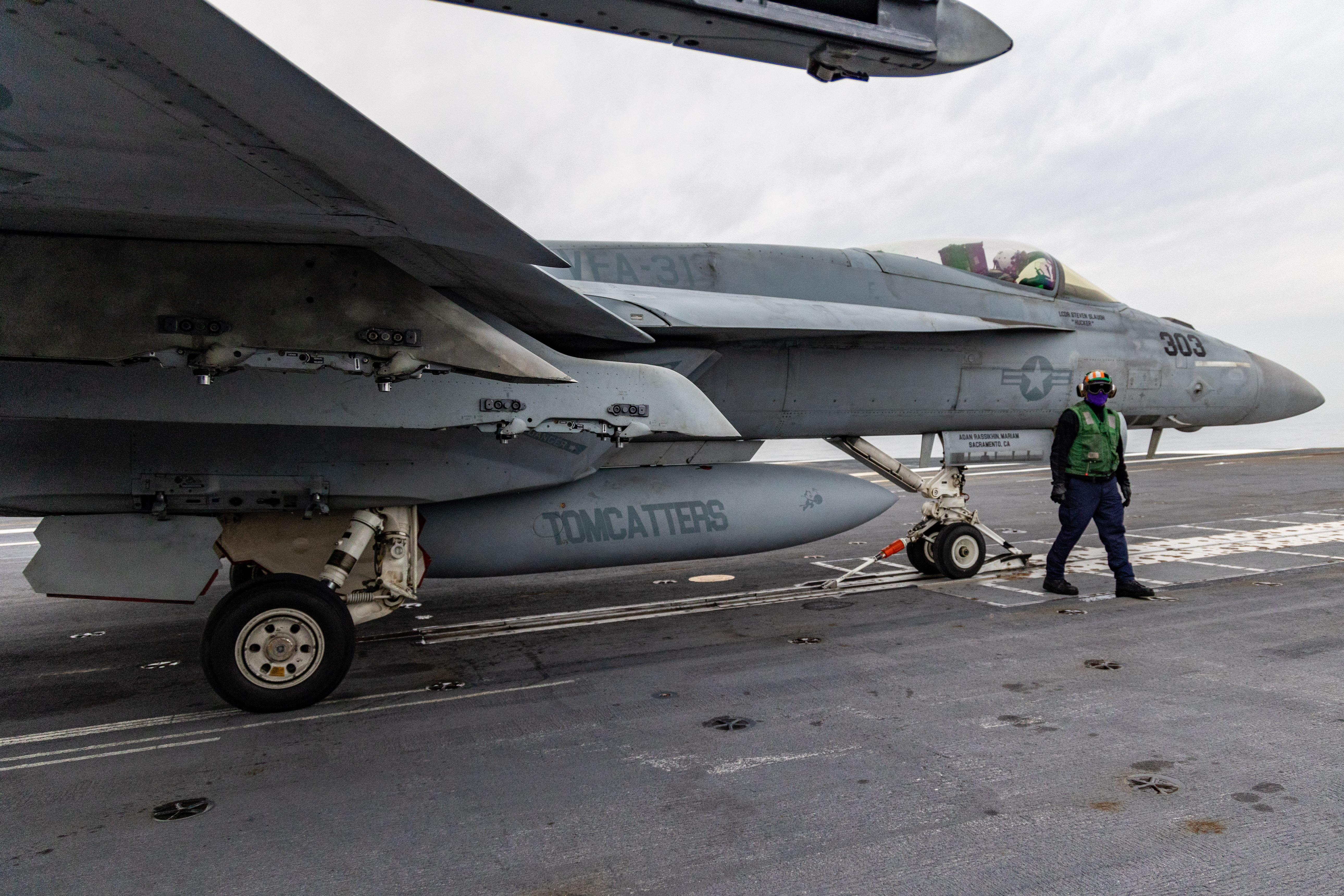
Over the next month, Norfolk-based Carrier Strike Group 4 will run Huffman’s CSG 12 through three phases of the graduation exercise. The exercise’s increasingly difficult tests simulate the toughest threats the strike group could face.
“They tend to mirror our real-world adversaries,” commander Lanzilotta said. “I would say that they evolve in accordance with our understanding of those adversaries and our understanding of the lessons from the previous carriers.”
Ship leaders gave few specifics on the exercise. However, USNI News understands it will be based on the well-worn “Treasure Coast” scenario. The Treasure Coast exercise involves a series of fictional small countries like Amber Land and Jade Land on the East Coast, each with a complicated relationship with the United States meant to mimic the geopolitical reality the carrier will sail into.
While the service won’t say where Ford is going, USNI News understands that after COMPTUEX, it will likely deploy to the Mediterranean following the planned departure of USS George H.W. Bush (CVN-77).
Bush and USS Harry S. Truman (CVN-75) spent much of their time in the region flying presence operations along NATO’s eastern flank to deter Russian aggression, operating with allies while sailing in waters crowded with Russian surface ships and submarines.
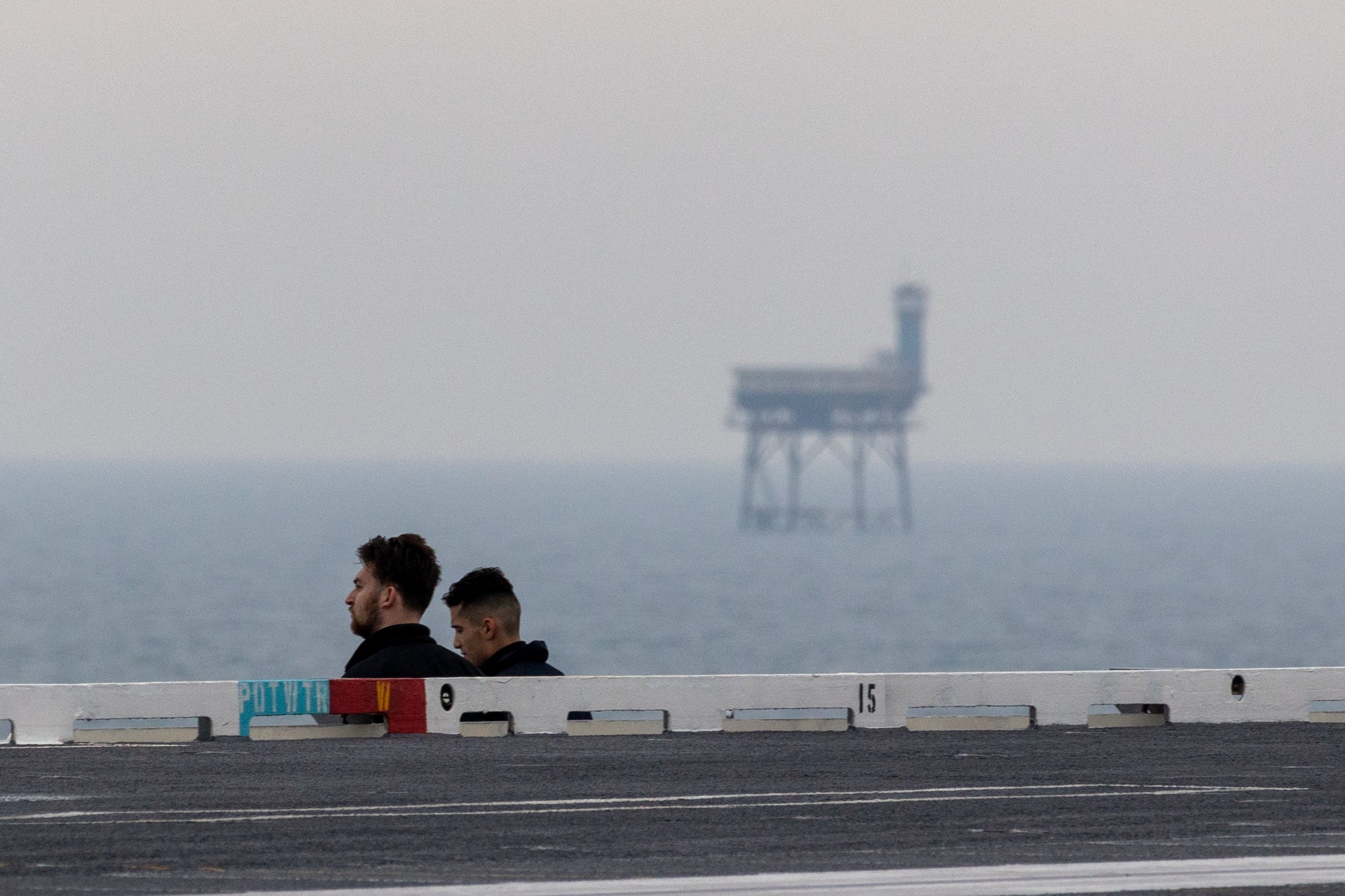
While USNI News was aboard the carrier last week, Ford stayed close to home, at one point making tight circles in view of the seaside hotels of Virginia Beach while the rest of the strike group finished qualifications ahead of COMPTUEX.
During the first two days underway, pilots with Carrier Air Wing 8 operating from Naval Station Oceana finished their carrier qualifications before flying in their F/A-18E/F Super Hornets aboard Ford. The carrier’s escorts – guided-missile cruiser USS Normandy (CG-60) and guided-missile destroyers USS Thomas Hudner (DDG-116), USS Ramage (DDG-61) and USS McFaul (DDG-74) – were operating elsewhere last week working on their own certifications.
For most of the crew, this is their second sustained period underway following fall’s Atlantic training cruise, which the service had called a “service-retained deployment” and now calls its “phase one” deployment.
“I’m not going to call it a shakedown cruise,” Huffman said. “But it was just a – really an opportunity to get the Ford and the Ford strike group into an operational setting away from what we had been doing, which is operating just mostly off the East Coast.”
During phase one, Ford embarked with a partial air wing and made port calls in Halifax, Canada and Portsmouth, U.K.
“We did a tailored ship’s training availability in October and then November. We took the ship up to Halifax and Portsmouth. It’s kind of a hybrid training scenario for the Navy, we’ve never really done that before,” Ford executive officer Capt. Matt Mulcahey told USNI News aboard the ship.
“Normally, you’d do it just off the coast of Virginia.”
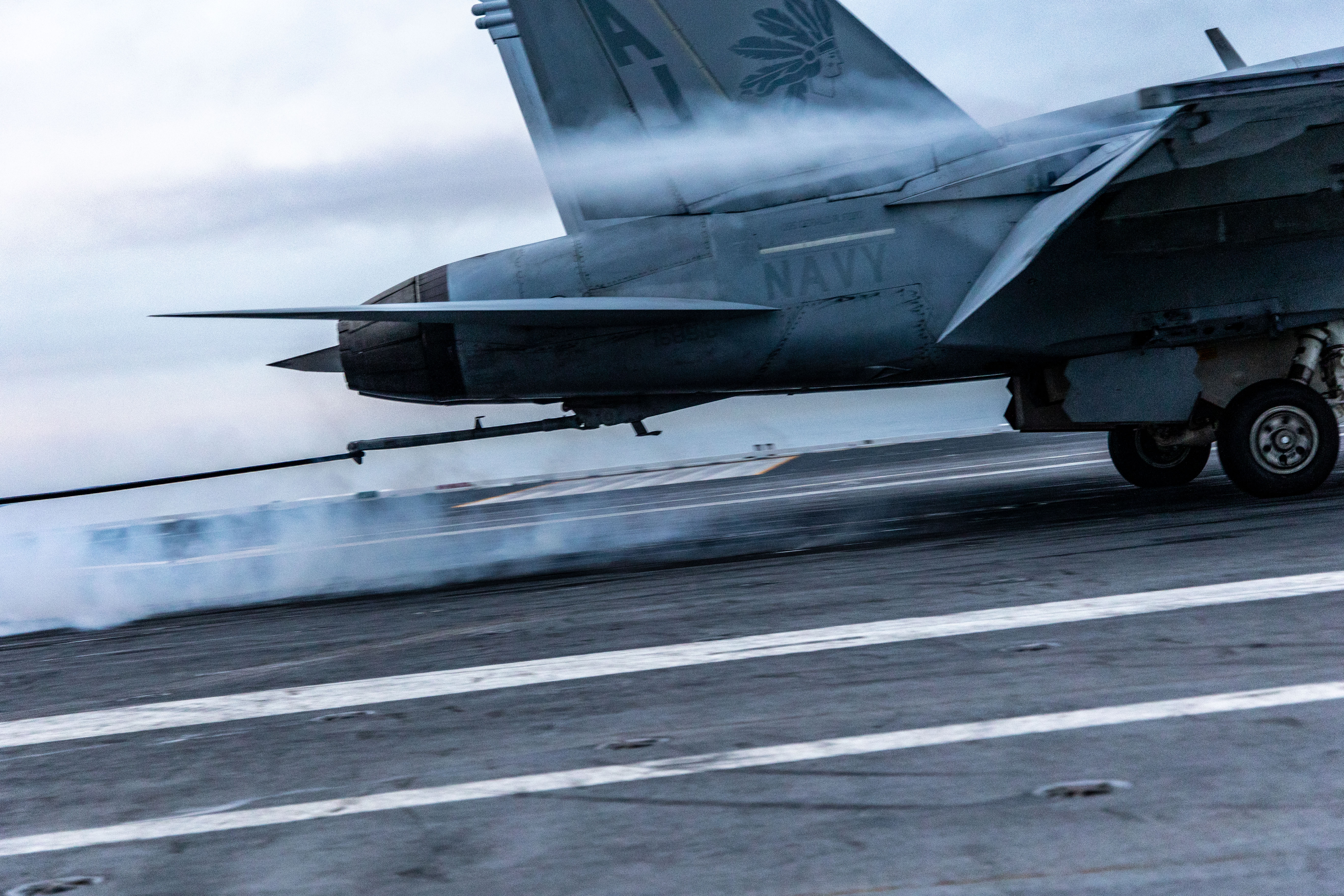
Now the training will ratchet up in difficulty.
Perhaps the most important goal for Ford’s COMPTUEX will be to qualify for its blue water certification – the proof that the carrier and air wing can launch and recover aircraft effectively enough not to need a land-based divert field, Lt. Cmdr. Lee Watkins, the operations officer with the “Tomcatters” of Strike Fighter Squadron (VFA) 31, told USNI News on the ship.
“Bluewater CERT is not easy for a Nimitz class to achieve. It sometimes takes a long time,” he said.
“On the Ford, we have the additional challenge of pilots and flight deck nailing procedures, as well as the newness of the systems that are not quite operating at the same efficiency as a Nimitz-class … It is definitely achievable and it’s going to be a challenge.”
Sorties vs. Sailors vs. Technology

Ford was sold to Congress based on a 30 percent improvement in sortie generation rate – or how quickly the carrier can launch combat aircraft – over the ships in the Nimitz class.
In 2019, the Program Executive Office Aircraft Carriers told USNI News the Navy was pushing for a sustained 160 sorties per 12-hour period as the goal for the Ford class. The Nimitz class rate is 120.
Testing, modeling and the advice of NASCAR pit crews led to innovations like the Advanced Weapons Elevator, which can carry more ordnance faster from the belly of the ship to combat aircraft, as well as fuel drops in the deck to quickly gas planes. The Electromagnetic Launch System (EMALS) uses the same technology as modern roller coasters and can theoretically launch aircraft faster than the Nimitz-class carriers. The relatively compact EMALS took up less space in the hull than the old C-13 steam catapults and reduced manning below decks from a dozen sailors to two. The Advanced Arresting Gear replaced the old hydraulic cables that caught incoming aircraft with similar space and crew-saving benefits to EMALS.
“As we analyzed the design, it wasn’t about getting the aircraft to the flight deck,” Rear Adm. Jim Downey told USNI News in 2019. “That wasn’t an impedance to [a] higher sortie generation rate. It was getting the bombs to the aircraft and then the aircraft off the flight deck.”
In 2000, former Secretary of Defense Donald Rumsfeld rejected the Navy’s plan to introduce the tech by spreading it out over three carriers in the Ford class and opted to put all of the tech on the first ship, upping the integration challenge of the new technology.

EMALS has been singled out by the Pentagon’s weapons testers for failing to meet its initial reliability goals. In its latest testing report, the Director of Operational Test and Evaluation saw a failure in about one out of every 614 EMALS cycles – far higher than the target level of once every 4,166 cycles. For its part, the Navy has said it measures the reliability of the EMALS by operational availability, which the service says is about 98 percent for its last 5,400 launches.
The operational availability depends in part on how quickly sailors can troubleshoot the most common faults in the launching system, Navy officials have told USNI News.
“We’ve gotten very good at coming through minor issues. We do not have hardly any catastrophic issues that take us down for extended periods of time,” Ens. Justin Knighton, the aircraft launch and recovery equipment maintenance officer, told USNI News in October.
For example, while Ford launched aircraft last week, USNI News observed about a 45-second pause before the launch of a Super Hornet. One sailor attributed the pause to “overheating.” The fault was cleared and the Super Hornet then launched.
Refining procedures will improve efficiency, the crew emphasized to USNI News.
“We’ve been doing things by the book and so now we’re just kind of figuring out where the system allows us to make things a little quicker,” Lt. Ian Loomis, a catapult officer aboard Ford, told USNI News.
“We’re coming up with new standard operating procedures. It’s going to get us closer to doing those sortie rates.”
Standard operating procedures for repairing or bypassing degraded systems safely are being constantly written and rewritten on Ford.
“The main operational difference is, the Nimitz class has decades of experience operating those systems and all the kinks are kind of worked out,” Watkins said.
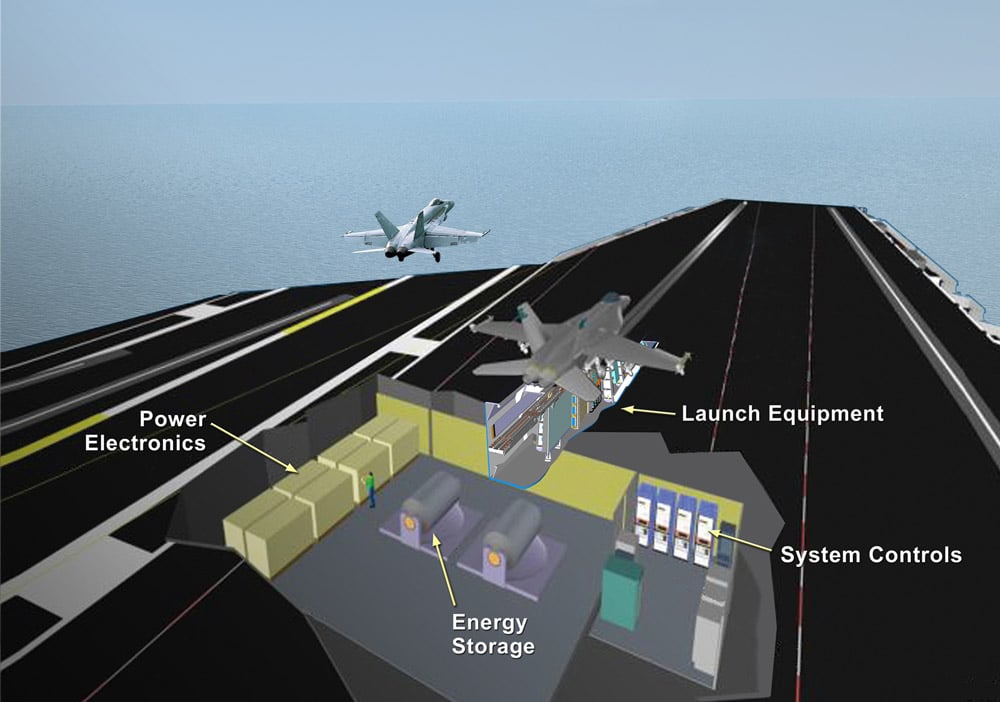
“Ford is still working through some of those things. We’re not quite as efficient yet with aircraft launch and recovery as the Nimitz class, but making strides towards getting there.”
Mulcahey said the sailors are still learning the differences between the decades-old procedures of the Nimitz class and the ones for the Ford class.
“The Nimitz is kind of like an old pair of jeans you put on. They’re super comfortable. I know exactly where I am and exactly what I’m doing,” he told USNI News. On Ford, “we have the baseline for how we know we need to operate. Now we’re just expanding that.”
Having the complete air wing aboard Ford will go a long way in improving the efficiency of the flight deck, carrier CO Lanzilotta said.
“We have a different layout on our ship [than Nimitz]. You don’t really find out the nuances until you actually do it. You can use modeling and simulation – and the technical community has certainly done that in the past in the lead-up of designing the ship and then implementing the ship,“ Lanzilotta said.
“We’ve come up with our standard operating procedure based on the technical community’s recommendation. We’re going to refine that. You can’t do that until you do it with all of the airplanes.”
The burden of wringing efficiency out of the system “comes down to people,” he added. “You can talk about technology day in and day out. But the things that make this happen are humans with beating hearts, and they have to come to the ship, they need to operate on the ship.”
“It comes down more in the lane of human performance than a notion of a technology being a magic tool that will get you [a] higher sortie rate,” Lanzilotta continued. “It takes time to do that kind of developmental test and evaluation on those systems. It takes time to make corrections to systems and ensure they’re 100 percent ready to go and that we’re willing to bet our lives on those systems.”

A bright spot for Ford has been the performance of the Advanced Weapons Elevators. The ship is equipped with 11 high-speed elevators capable of carrying 24,000 pounds of ordnance to the hangar bay and the flight deck. For two years, failure to integrate the elevators was a chief criticism of the carrier. The last elevator was delivered to the Navy from HII in late 2021. Since then the system has been almost faultless, CWO 2 Jeff Towry told USNI News during an AWE demo.
During the fall underway, the 11 elevators had no failures, Towry said.
‘Make The Ship and This Crew Ready’
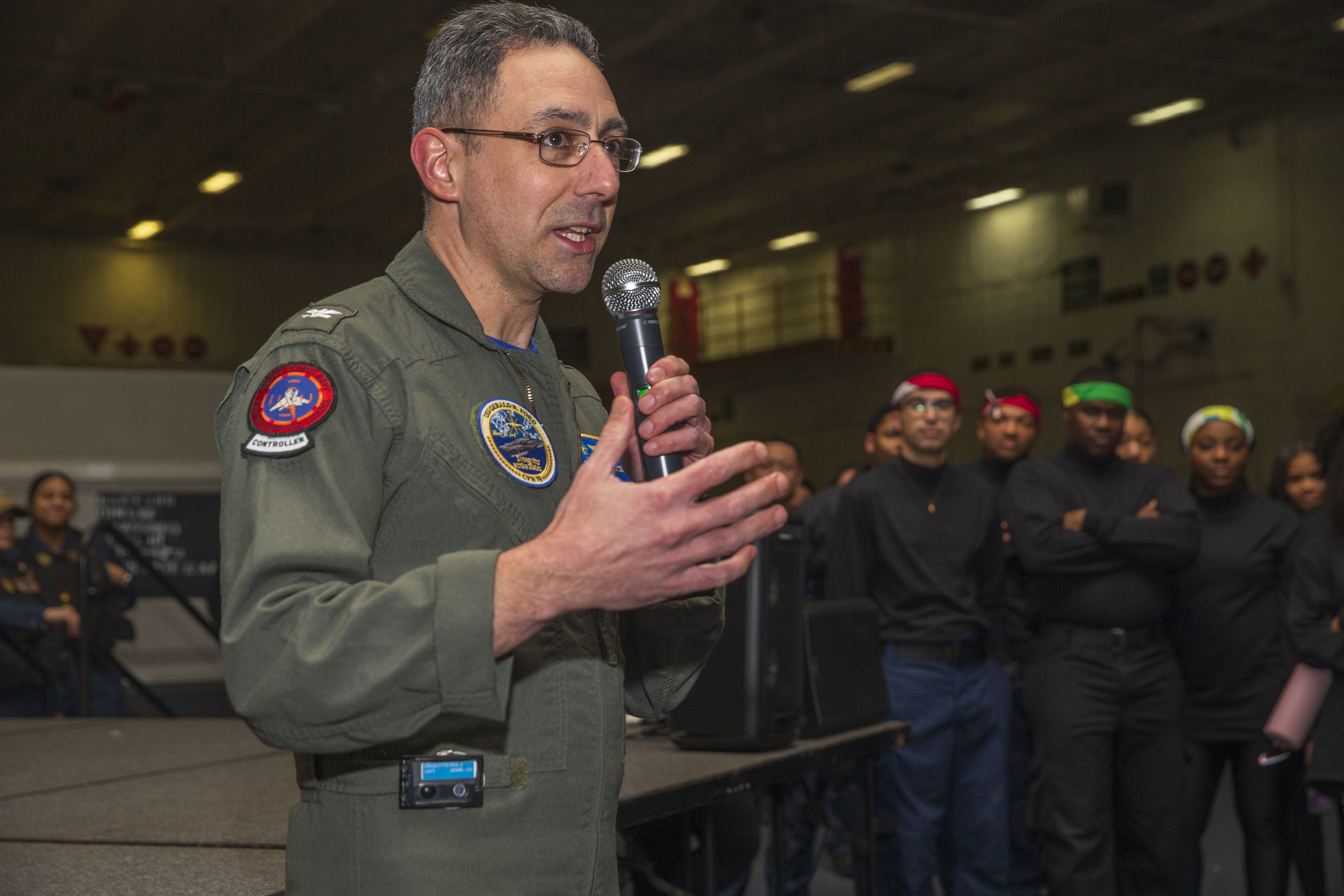
Over the next three weeks, the crew will face challenges CSG 4 has dreamed up to test the Ford Strike Group, with a focus on training the sailors and refining procedures.
“They have done a tremendous amount of work to take what was a… new-build ship with all these new technologies and get it underway. It’s a massive amount of effort at the most junior sailor level to get this massive warship, all of the technologies layered on top of each other, to get that underway,” Mulcahey told USNI News.
“They’re writing the books … What are the best practices to operate this equipment? Where can we gain more efficiencies or safety margin?”
Lanzilotta said he doesn’t spend much time thinking about the previous issues with the ship or the promises that the Navy and Pentagon made about the carrier’s performance.
“My job here is to make the ship and this crew as ready as it can be today,” he said. “I don’t get too wrapped up in some of the things that have happened in the past.”





